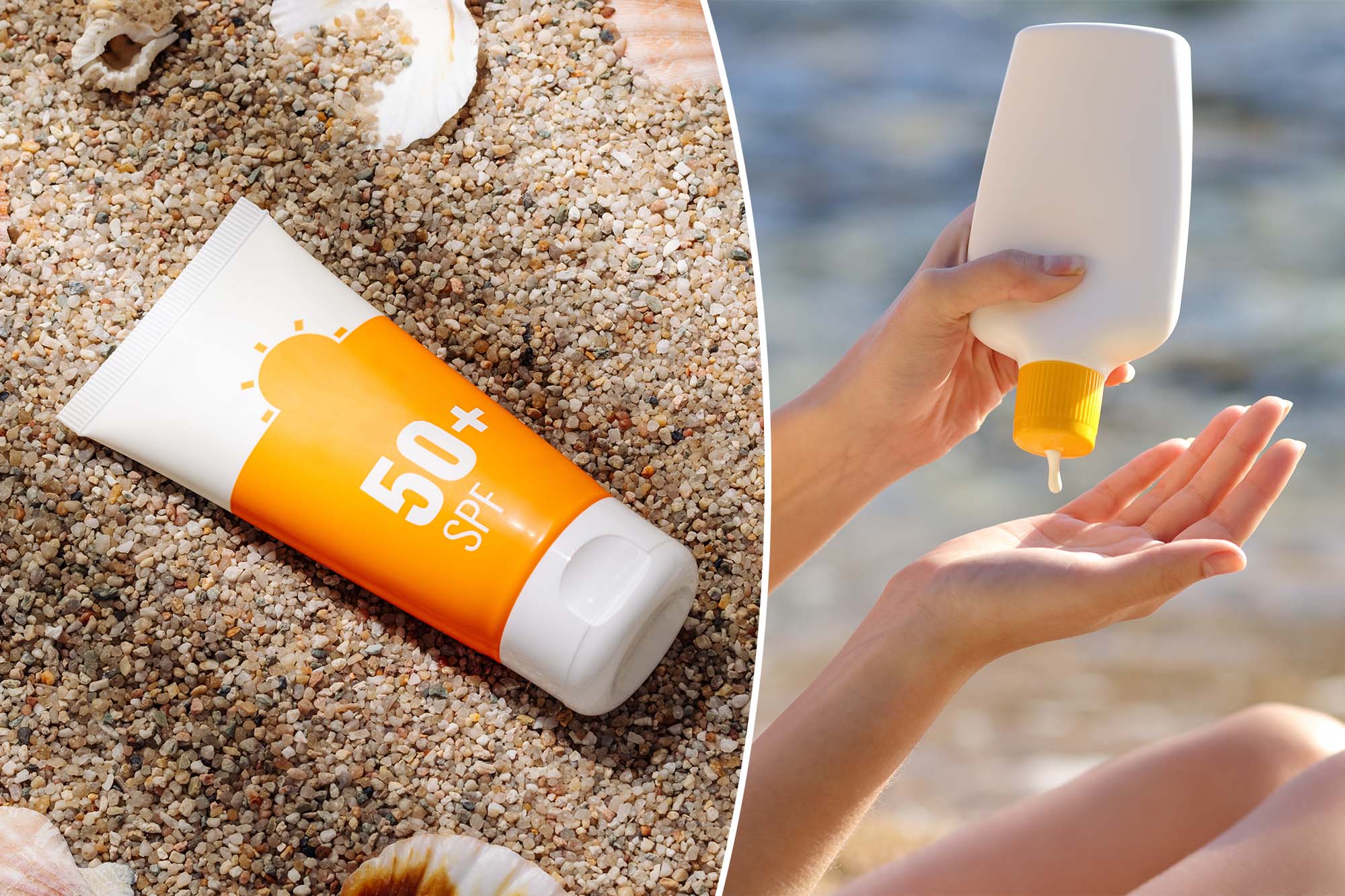It’s time to project sun protection.
A new report from the Environmental Working Group (EWG) reviewed more than 2,000 SPF products sold in the United States, and found that almost 80% of them did not fulfill their security, health and effectiveness criteria.
“Bringing any sun protection is much more important and offers better skin protection than applying nothing. But not all solar filters are created equal,” said Dr. David Andrews, head of EWG’s acting sciences.
So before going to the beach, here is a breakdown of what you can be in your bottle of sun protection. Do not burn the sun or your SPF, this summer.
Lowercase particles, great concerns
Polvorization solar filters may seem like an ungusted way to stay protected, but they could take some hidden risks.
Surveys show that most North -Americans prefer lotion, but aerosol sprays still make up 26% of the United States Sollar Protection Market, according to EWG report.
The organization has proposed concerns about the potential risks of inhaling tiny zinc oxide and titanium dioxide, two ingredients common to solar spray filters.
While these minerals effectively provide protection, they do not degrade under the Sun and are generally considered safe, inhale them can have respiratory risks.
Small particles are difficult to erase, increasing the possibilities that enter the bloodstream.
There is another great concern: Benzene, a well -known carcinogen. This chemical was recently found in several aerosol solar filters, causing memories due to its possible health risks.
Short -term exposure to benzene can cause dizziness, drowsiness and even unconsciousness, while long -term exposure could cause bone marrow damage, anemia and an increase in risk of cancer, especially leukemia.
Secret odors
The EWG report also sounded alarms on fragrances not disseminated in the sun protector, leaving the consumers “in the dark” on what is really in their products.
The group found that 36% of the solar filters they reviewed contained fragrance mixes, which could include a mixture of unlisted aroma chemicals. These ingredients may contain allergens, hormonal or even carcinogenic disruptors, without you even knowing it.
Blues butyloctil
North -Americans love a high SPF, in fact, 23% say they buy the highest they can find. But they may not receive additional protection.
The EWG said many companies use inactive ingredients such as the Salicilated Butyloctil (BOS) to increase their SPF number. Bos belongs to a family of chemicals that may be related to the toxicity of development and reproduction, especially during pregnancy.
It is also a cousin of salicylic acid, which can wrap with the skin barrier and cause redness, dryness, itching and bites, not the type of glow you want in the pool.
Worse, the EWG said that promoters can inflate the SPF values of a product without improving their protection against the ultraviolet rays of the Sun.
Food and drug administration recommends choosing sun protection with a SPF of at least 15.
Goodbye, Oxybenzone
It’s not all bad news.
In 2016, oxibenzone was found in 70% of non -mineral solar filters. The EWG has reported a sharp descent, with only 9% of the products that contain it for 2025.
“Change reflects the increasing awareness of the high absorption of Oxybenzone through the skin and other possible health damage,” the report said.
Studies have found that oxibenzone remains in breast milk, urine and blood plasma long after the application of sun protection, which indicates that it is absorbed in the body and sticks much later.
Animal research suggests that oxibenzone could be wrapped in the endocrine system, which regulates crucial biological functions such as metabolism, growth and reproduction. More studies are needed to confirm if it is the same risk in humans.
Oxibenzone is also a common allergen, related to skin reactions such as in redness, itching, eruptions, and in severe cases, allergic contact dermatitis.
The great faded of vitamin A
Solar protection manufacturers also say more and more vitamin A, also known as retinil palm.
In 2010, 41% of solar filters had it, but today, this number has fallen to 2%.
This is a skin victory, as investigations show that vitamin A can be broken in the Sun, possibly accelerating skin damage instead of protecting it against it, according to EWG.
Which solar filters are safe?
If you are in the market for a bottle of sun protection, the Verified EWG program has covered you.
Products with this brand meet stricter safety and effectiveness standards than the North -American and European Regulators require.
In order to win the EWG verified label, solar filters must have complete ingredients transparency and be free of harmful substances such as chemicals or toxic pollutants. In addition, they must protect themselves from the ultraviolet rays in and B.
More than 60 solar filters, along with more than 60 moisturizers and balm with SPF, have won the EWG verified label.
#Scientists #issued #urgent #notice #solar #filters #health #damage
Image Source : nypost.com
